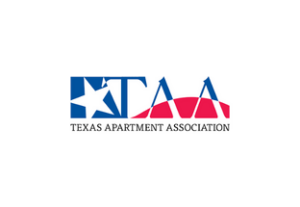Three commercial property management trends to watch
With the advent of shared workspaces, the recent focus on sustainability in real estate, and the vastly changing landscape of urban settings, the current commercial property management trends are filled with challenges and opportunities.
In a special episode of “Building Success: A Real Estate Podcast” recorded live at IUC 2018 in Atlanta, MRI Software’s Andy Welkley sits down with Melissa Bartow of Measurabl, Scott Morey of GPG Advisers, Brian Wong of Waypoint, and Geoff Lewis of Honest Buildings to discuss the current climate of the commercial property management industry and trends that are likely to continue into the years to come.
The continued rise of shared workspaces
Companies like WeWork and Industrious Office have revolutionized workspaces around the country, and while their success as businesses may be a question of financial viability, there is no doubt that the value propositions at their core are here to stay. The demographics of today’s workforce look far different now than they did several years ago, and businesses are learning how the younger side of the workforce now perceives their ideal workspace as a place that fosters creativity and collaboration. Traditional cubicles don’t appeal to this generation, and as such, WeWork and Industrious Office are meeting the demand by providing spaces with more amenities for workers, such as kitchens, game rooms, and open desk pods. Companies are cutting down their number of conference rooms because the most productive meetings are now the ones that begin at someone’s desk or in another communal, comfortable space.
In addition to the shifting desires of the workforce, shared workspaces are also rising to meet the needs of companies who cannot lock themselves into 7-10 year leases because this might restrict growth. As smaller companies continue to appear out of nowhere and expand rapidly, the traditional model of signing 7-10 year leases is no longer viable for many companies. The month-to-month space rental model used by WeWork is one of the company’s biggest appeals to small businesses. Let’s say Company X was established in 2017 with 10 people. Let’s also say that now, in 2019, Company X has taken on more business than they could have predicted and now they need to expand their business and add 30 employees. A 7-10 year lease would restrict their ability to do this. With the month-to-month lease of a shared workspace, however, Company X could easily move into a workspace with more room to fit their company or build out the space they currently have.
Companies that offer shared workspaces are also rising in popularity not just because of their design, but also because of their accommodations for businesses that decided to renovate their workspaces. Businesses that want to transform their current space into one with a more communal feel often don’t have the extra staff necessary to facilitate this kind of transition. Companies like WeWork, however, are making names for themselves by overseeing the renovations and transition process, and they’re even going so far as to manage the new workspaces. This appeals to companies who might not have the resources to support an interactive and communal workspace on their own.
The move towards sustainability
In the midst of these developments, the idea of energy efficiency and sustainability is becoming something that many different parties are pushing for in commercial property management. Along with the desire for a more collaborative workspace, millennials are beginning to place significant value on workplaces that line up with their personal views. Companies with green initiatives or a special focus on energy efficiency are therefore more likely to recruit millennials. For businesses whose workspace does not have energy efficient initiatives, a move into a more appropriate workspace might be more of a necessity than previously thought.
It’s not just pressure from millennials that’s driving the need for sustainability. Due to the quantifiable value of sustainability, a focus on efficiency is also being driven by the expectations of investors. These investors are seeing a significant amount of money being left on the table, whether it’s the result of operational inefficiencies such as lights being left on, or systematic inefficiencies in the way businesses store data. Investors are also pushing for increased sustainability and efficiencies in how tenants interact with the workspace.
These expectations are playing an even bigger role in public housing, where properties are now being devalued based on their climate impact and operational inefficiencies. Public housing properties are also being required to submit energy reports on the property’s sustainability in order to receive approval from Housing and Urban Development. To meet the needs of these properties, companies like Measurabl have easy-to-use software offerings that can be plugged into a property’s system and easily gather data regarding that property’s energy usage. This type of technology is also making its way into capital markets, where investors are using benchmarking to take the metrics from other properties and compare them to the metrics of their own property. All of these developments point to sustainability becoming more and more of a focus point among commercial property managers who seek to use it as a tool for recruiting millennials and a positive metric in appealing to investors.
New challenges in cities and urban environments
In order to meet the rising expectations in sustainability, companies have begun moving headquarters and office spaces further into cities where commercial properties like shared workspaces are fairly common. This move, however, presents its own challenges. As businesses draw people into the city for both work and recreation, the increase in traffic is creating a unique problem: parking clogs up the city streets.
The problem of parking in cities presents a challenge and an opportunity to commercial property managers looking for niche markets to serve. For supermarkets and other retail stores, solutions to this problem could look like an increased usage of delivery or in-store pickup technologies. For other commercial property managers, it indicates that investing in parking decks and other innovative solutions to crowded streets might not be a bad place to focus one’s energy.
Although the commercial real estate industry faces a greater number of challenges today than ever before, the field is also rife with opportunities for property managers looking to innovate in bold ways to solve distinct problem and meet new needs. To learn more about commercial property management trends and other insight into real estate software, check out “Building Success: A Real Estate Podcast.”
Efficiently Manage Your Equipment Leases with MRI ProLease
When it comes to managing equipment leases while complying with ASC 842/IFRS 16 reporting, no solution is more intuitive – or more robust – than MRI ProLease’s Equipment Lease Administration. As part of the MRI ProLease platform, the Equipment Lease …

